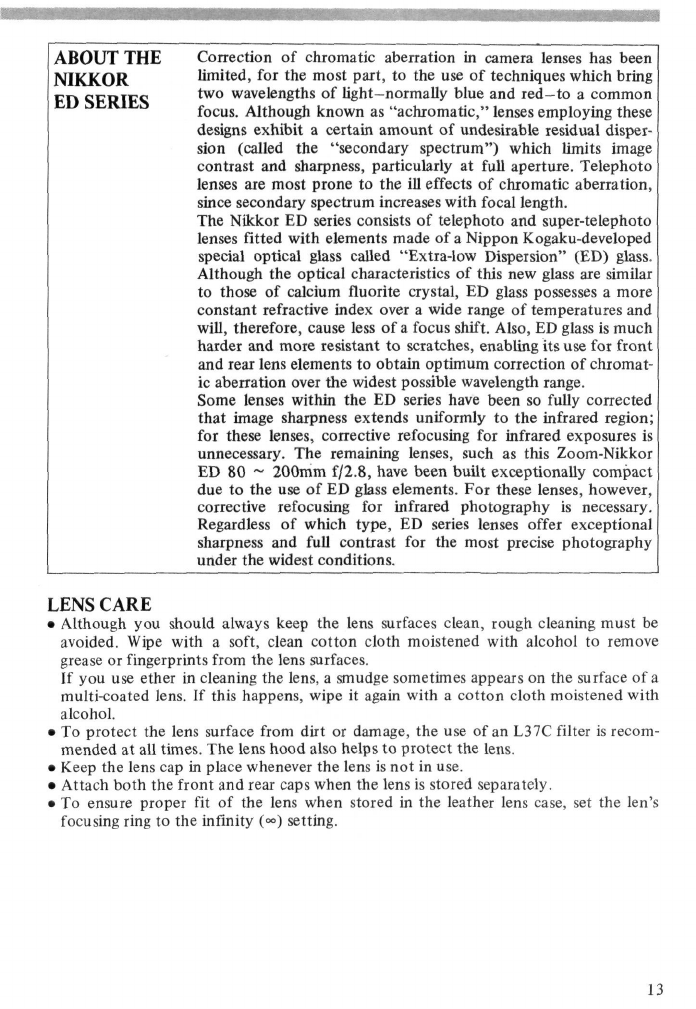
Correction of chromatic aberration in camera lenses has been
limited, for the most part, to the use of techniques which bring
two wavelengths of light—normally blue and red—to a common
focus.
Although known as "achromatic," lenses employing these
designs exhibit a certain amount of undesirable residual disper-
sion (called the "secondary spectrum") which limits image
contrast and sharpness, particularly at full aperture. Telephoto
lenses are most prone to the ill effects of chromatic aberration,
since secondary spectrum increases with focal length.
The Nikkor ED series consists of telephoto and super-telephoto
lenses fitted with elements made of a Nippon Kogaku-developed
special optical glass called "Extra-low Dispersion" (ED) glass.
Although the optical characteristics of this new glass are similar
to those of calcium fluorite crystal, ED glass possesses a more
constant refractive index over a wide range of temperatures and
will, therefore, cause less of
a
focus shift. Also, ED glass is much
harder and more resistant to scratches, enabling its use for front
and rear lens elements to obtain optimum correction of chromat-
ic aberration over the widest possible wavelength range.
Some lenses within the ED series have been so fully corrected
that image sharpness extends uniformly to the infrared region;
for these lenses, corrective refocusing for infrared exposures is
unnecessary. The remaining lenses, such as this Zoom-Nikkor
ED 80 ~ 200mm f/2.8, have been built exceptionally compact
due to the use of ED glass elements. For these lenses, however,
corrective refocusing for infrared photography is necessary.
Regardless of which type, ED series lenses offer exceptional
sharpness and full contrast for the most precise photography
under the widest conditions.
LENS CARE
• Although you should always keep the lens surfaces clean, rough cleaning must be
avoided. Wipe with a soft, clean cotton cloth moistened with alcohol to remove
grease or fingerprints from the lens surfaces.
If you use ether in cleaning the lens, a smudge sometimes appears on the surface of
a
multi-coated lens. If this happens, wipe it again with a cotton cloth moistened with
alcohol.
• To protect the lens surface from dirt or damage, the use of an L37C filter is recom-
mended at all times. The lens hood also helps to protect the lens.
• Keep the lens cap in place whenever the lens is not in use.
• Attach both the front and rear caps when the lens is stored separately.
• To ensure proper fit of the lens when stored in the leather lens case, set the len's
focusing ring to the infinity (°°) setting.
ABOUT THE
NIKKOR
ED SERIES
13


















